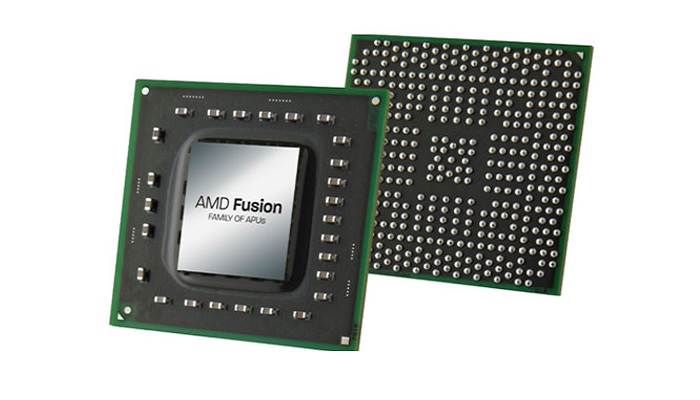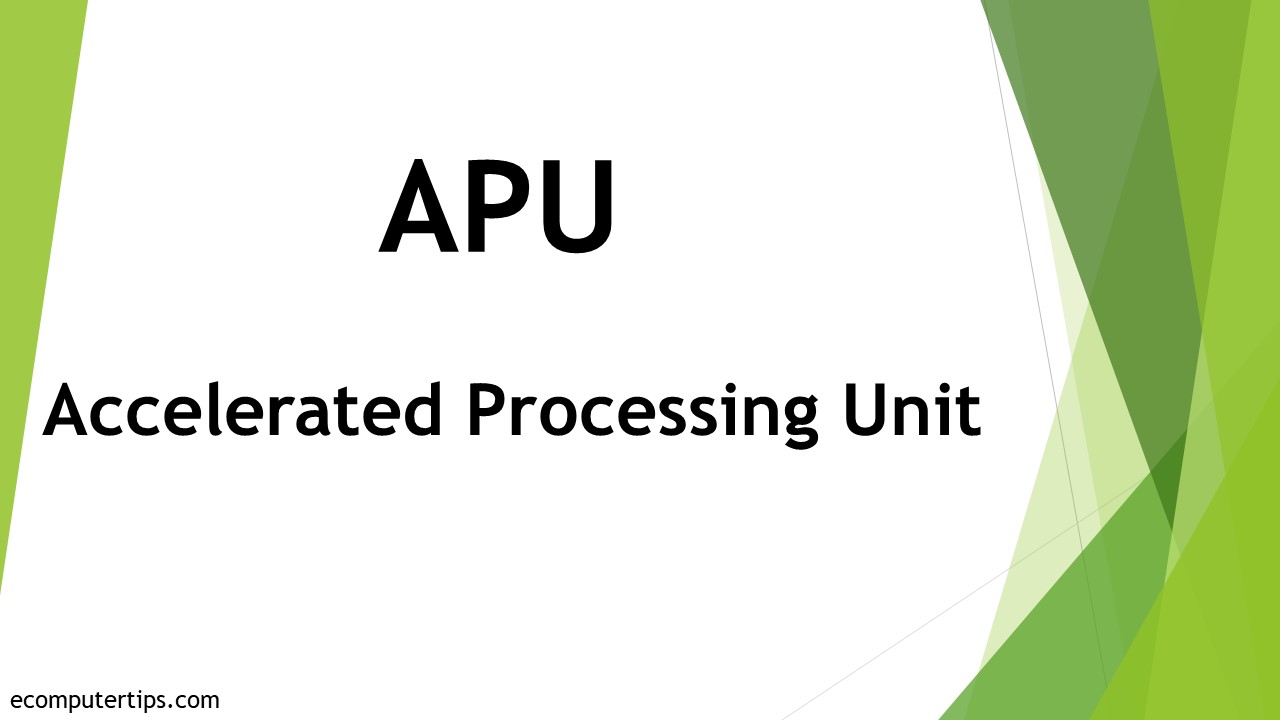In This Article
What is APU (Accelerated Processing Unit)?
APU, or Accelerated Processing Unit, refers to the chip in which both the Central Processing Unit and the Graphics Processing Unit are present on the same die.
This is a general purpose processor and is usually considered as a System on a Chip or SoC which contains different processing units.
KEY TAKEAWAYS
- APU was first known as Fusion because it combined the CPU and the GPU on the same chip.
- The combination of CPU and GPU enables the APU to transfer data at a much faster rate.
- The design of the APU ensures it can perform with low power consumption.
Understanding APU (Accelerated Processing Unit)

Created by AMD in 2011, the Accelerated Processing Unit has integrated graphics that add gaming ability up to a certain resolution and frame rate.
The APUs are also able to handle video processing, 3D rendering, and other application-based accelerators.
Also known as the Advanced Processing Unit, technically, the APU refers to any processing happening outside the CPU of the computer.
Therefore, the GPU can be considered as an APU which can be used for several other purposes apart from rendering graphics.
It can also be an accelerator and a Field Programmable Gate Array or FPGA.
The first generation of APU was named Llano, with the later generations named Rembrandt, Barcelo, Dragon Range, Phoenix, Kyoto and others, usable in desktop, servers, and mobile devices, based on their models.
The idea of designing an APU came to the software manufacturers and programmers when they realized that the GPUs could not perform at their optimal potential.
Therefore, they wanted some kind of ‘parallel processing’ and the best way to do so is to integrate the CPU and GPU into one single chip so that they can work alongside each other.
With both the CPU and GPU residing on the same chip, the APU reduces power usage and at the same time increases data transfer.
It reduces the time to communicate because the processors are closer to each other.
The architecture of the APUs is pretty unique. It not only has the GPU but also the cache and other CPU modules on the same die.
All these use the same bus as well. It is due to this specific architecture that allows using OpenCL and other graphics accelerators with the graphics process integrated into the processing unit.
This architecture allows much better software and hardware implementations that offers the following benefits:
- An optimized platform with shared power management, GPU compute C++ support and Heterogeneous System Architecture Memory Management Unit or HAS MMU
- A better architectural integration with fully coherent heterogeneous memory management of the CPU and GPU using the same address space and pageable system memory and
- Better system integration with context-switched GPU compute tasks and pre-empted long running graphics tasks apart from better quality of service with prioritized or equalized hardware resources among several users and apps.
The different sectors that benefit by using APUs are:
- Software development
- Visual content creation and
- Gaming.
It can significantly increase the overall performance of a computer because it can offload a lot of tasks from the CPU that it would have had to do single handedly otherwise.

What is the Disadvantage of APU?
The most significant downside of the APU is that it cannot offer the same punch as the CPU or dedicated GPU due to a few specific factors such as:
- Less power usage
- Shared memory and
- Limited GPU crossfire options.
APU Vs CPU
- The technology of and APU is more compact with both a CPU and a GPU integrated in it while a CPU is not
- The performance of the APU is mediocre in comparison to the CPU whether it is while playing games or other computational jobs
- The APU is faster than the CPU in low-end systems because the processors are located close to each other
- The APU consumes less power than the CPU and
- There is no separate memory or cooling system in the APU which hinders its performance as well in comparison to a CPU.
Questions & Answers:
Is an APU Good for Gaming?
Yes, an APU is good for gaming because it comes with a graphics processor built in it that makes it perform much better and faster as compared to the CPU without integrated graphics.
However, with that said, it is not suitable for playing games at very high resolution, fidelity, or frame rates.
How Much RAM is Needed for APU?
Ideally, if it is a Ryzen APU used for gaming, it is best to have 16 GB of RAM. This will be the sweet spot because most games today do not use that much RAM.
Of course, you can have much more RAM than that if you wish, which will enhance the gaming performance by about 20% since the GPU in an APU is much more responsive to the memory bandwidth than the CPU.
Does an APU Need a Graphics Card?
A graphics card in the APU is needed because it eliminates the need for a dedicated graphics card or the system to boot or perform graphical tasks.
It allows using the same resources and cores as the Central Processing Unit which enables it to perform faster, of course within its limitations.
Can You Replace APU with CPU?
Yes, you surely can replace your APU with a CPU but for that you will have to replace the RAM and the motherboard.
You will probably have to consider replacing the Power Supply Unit or PSU as well because the APU typically consumes much less power than the CPU.
Does APU Affect GPU Performance?
Normally, the performance of the APU will not affect the performance of the GPU integrated into it. In fact, it is the other way around.
The GPU built in it may produce more heat and impede heat transfer out of the CPU, thereby reducing its thermal performance.
Can You Use an APU as CPU?
Yes, you can use an APU as a CPU. In fact, that is the whole idea of having the CPU along with the GPU in the same die.
Conclusion
An Accelerated Processing Unit of AMD is a good option for those users who want faster graphics performance while gaming or other graphics-related tasks without using a dedicated GPU.
It is also a good option to choose if you want to perform both GPU and CPU intensive jobs on your computer.